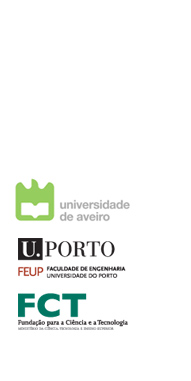

Research Project
According to the EU Green Paper – Towards a European Strategy for the Security of Energy Supply (2000), the European Union is becoming increasingly dependent with respect to its energy supplies, which are estimated to grow from the current 50% to 70% in 2030. At the same time, the EU is faced with the challenge of meeting the Kyoto Protocol (1997) targets within the next few years. In this framework, buildings are the largest end user of energy, since 40% of all energy is used in the residential/tertiary sectors. The European Commission (2001) concurrently estimates that the energy savings potential in the building sector could be about 22% in 2010. Therefore, it is obvious that the building sector plays a major role in the energy future of the EU.
In Portugal, the situation is even more worrisome, because over the past 10 years the country has increased its energy consumption by 35%, at a rate of 4,5% per year, has been one of the most energy dependent countries of the EU25, importing about 90% of its energy needs, and has doubled electricity consumption, at a rate of about 6.3% per year. Also, private consumers along with the service sector are responsible for 28% of total energy consumption and 59% of electricity consumption. Finally, the price of oil has skyrocketed from 30 to 80 USD/barrel over the past decade. The Portuguese Government has partially transposed the EU Directive 2002/91/EC on the Energy Performance of Buildings by means of national legislation (Decree-law no. 78/2006, 79/2006, and 80/2006).
The main goal of the present proposal is to study the use of phase change materials (PCMs) in buildings in Portugal. PCMs are materials capable of increasing thermal inertia of buildings without increasing the thickness of walls, for instance. Organic (e. g., paraffin waxes or fatty acids or fatty acid esters) and inorganic compounds are the two most common groups of PCMs. In comparison with other thermal storage materials, such as concrete or water, PCMs have a higher energy storage density. In that way, one can achieve the same goal with less material. On the other hand, PCMs also allow the storage and the release of thermal energy at an almost constant temperature. The use of PCMs is thus especially interesting in the design of passive solar buildings. However, incorporating PCMs in the building envelope makes it difficult to exchange a high rate of heat between the air and the PCM by convection. A recent trend in building design is the use of active PCM systems, which are based on a thermal storage unit incorporating PCMs and forced air, to improve the heat transfer rate by convection.
Although some PCMs have been identified as adequate for passive solar applications, there is still a lack of design guidelines as to how the PCMs should be best incorporated into the design of building envelopes. The major design parameters, namely PCM´s melting/freezing temperature, the content and position of PCM in building materials, and the size of PCM-treated structures, need to be specified for a given space load characteristic and regional climate condition. In Portugal, such regional climate conditions have been identified and incorporated in the Decree-Law no. 80/2006 through 3 different summer (V1, V2, and V3) and 3 different winter regions (I1, I2 and, I3).
The first stage of the proposed investigation will consist of identifying, for each set of regions, the combination of PCM parameters that optimizes the PCM latent heat storage capacity during daily operation as well as finding the most adequate among known PCM-integrated envelope designs, incluiding passive and active designs. The use of a software packages like EnergyPlus or TRNSYS is suggested in order to fulfill the desired results. The second stage of the study will consist of evaluating how PCM-integrated wall structures, as suggested from the first phase of the investigation, could influence building heating and cooling load characteristics, the operation of HVAC equipment, and overall building energy consumption. This stage will culminate with the construction of two test cells, one made out of concrete and the other made out of concrete incorporating the PCM, with the support of an industrial partner.
The results of the proposed research work will show how PCMs should be integrated into passive building structures in the different climatic regions of Portugal, thereby allowing the use of less thermal storage mass in order to reach the same objectives as that of conventional systems.
